| Robot Mechanics |
|
||||||||||||||||||||||||||||||
|
Stiquito Kit BattleKits Robot Toys Solar Kits Robot Arms Robosapien Basic Stamp Kits Lego MindStorms
Hobby Robots Robot Sports Electronics Mechanics Robot Minds Books for Kids Robots at Work Microcontrollers Advanced Books Used Books
Robot Motors Remote Controls Robot Parts Robot Tools Magazines Robot Videos Robot News RoboLinks Contact
|
Mechanical design and construction are two key elements of building
successful robots. Some of the books in this section will provide basic
knowledge to the novice, others will provide even the most advanced
robot builder with tips and tricks that could make the difference
between an "ordinary" robot, and a work of art. "Mechanics is the paradise of mathematical sciences... Mechanical
science is most noble and useful beyond all others, since by means of it, all animated
bodies that have motion perform all their operations."
Chapters include:
|
||||||||||||||||||||||||||||||
Author Gordon McComb focuses on the basic concepts and specific
applications you need to build efficient robot bases -- and have a great time in the
process. In the clear, easy-to-follow style that has made him a favorite among robotics
fans, Gordon tells you how to get things up and running using inexpensive, easily-obtained
parts and simple equipment. The "Robot DNA" series has become an absolutely essential addition to every amateur roboticist's bookshelf. Start your collection today with Constructing Robot Bases.
Beginning with the simplest of machine - the lever - the text proceeds with discussions of pulleys and hoists, wheels and axles, the inclined plane, the wedge, the screw, and several types of gears (spur, bevel, herringbone, spiral, worm, etc.). A chapter on the concept of work discusses the measurement of work, friction, and efficiency. This is followed by investigations of power, force, and pressure. The fundamentals of hydraulic machines are discussed in detail. Other chapters cover machine elements (bearings, springs, etc.), and basic mechanisms (differentials, couplings, cams, clutches and more). Every concept is clearly defined and the discussions build easily from elementary theory to particular applications familiar to anyone with the slightest interest in mechanics. Important concepts, machine components, and techniques are clearly illustrated in over 200 diagrams, drawings, and cross-sections that reveal inner workings. Originally designed for use in U.S. Naval training schools, Basic Machines and How They Work is very valuable to the novice who desires a basic knowledge of mechanics.
This small, inexpensive book is a great introduction to the world of mechanical devices. Most of these mechanisms are simple, and the 19th century technology is well suited for amateur garage workshops. It starts with the transmission of power by pulleys, and ends with some moderately complex differential gearing arrangements.
The new Fourth Edition of this book is your one-stop idea-guide for timesaving, ready-to-use mechanical component designs. Whatever mechanical, electromechanical, or mechatronic device, product, or system you are designing or improving—motion-control components, appliances, machine tools, spacecraft, or robots—you will find relevant illustrations and text in this book. If your application requires components that move, you need this book! An unmatched compilation of proven design ideas and solutions, Mechanisms and Mechanical Devices Sourcebook describes and illustrates over 2500 tested mechanisms, linkages, cams, variable-speed drives, gears, clutches, brakes, belts, flexures, chucks, clamps, and springs. You can use them as is--or modify them to meet your needs. The book illustrates how these components combine successfully with electrical, hydraulic, pneumatic, optical, thermal, or photoelectric devices. It shows you how to create integrated designs that perform a range of complex tasks. The book includes key design curves, graphs, tables, and equations for designing a variety of components - geared five-bar mechanisms, internal, and external Geneva wheels, crank-and-rocker links, snap-action toggles, angular-motion and curvilinear-motion mechanisms, slider cranks, ratchet wheels, and more. Mechanisms and Mechanical Devices Sourcebook is the most extensive, thoroughly researched reference of its kind. The authors compiled the data from major product-design and design- engineering publications and from other authoritative sources. It's the place to turn for the time-saving approaches that can get your design started off right; break you out of conceptual log jams; suggest more cost-efficient alternatives; or just fine-tune a good design to make it even better. The only reference of its kind, this sourcebook contains drawings and descriptions of mechanisms and mechanical devices that have proven themselves in modern products, machines, and systems. This encyclopedic guide offers: *An extensive pictorial directory of time-tested components, mechanisms, and devices that have applications in new designs and modifications *Mechanisms and devices are organized by application and principle of operation--to give you fast on-the-job access. *Illustrated technical articles summarizing important, expanding fields in mechanical, electromechanical, and mechatronic design and engineering *A source of historical information about mechanical components and devices that have participated in design solutions in the past and can be recycled for new designs, or will offer ideas that will inspire original concepts *Key equations and charts for designing mechanisms, and a complete index, making it easy to find references to specific components, devices, mechanisms, and systems Table of Contents:
The text explains how each device works, along with illustrations that point out what each part does in the mechanism. Not as easy as some of the other books in this section, but much more complete.
Filled with easy-to-understand illustrations, this unique guide describes in detail how to: design robot propulsion systems; fabricate components for pneumatic systems; design simple hydraulic systems, gear trains and cams; and adapt off-the-shelf parts and components for use in electronics experiments.
Everywhere you look, you'll discover unique constructions mined from hard-to-locate technical journals and publications, forward thinking creations and valuable historical finds rescued from undeserved obscurity. Gathered together by respected engineer and editor Robert O. Parmley, this fully illustrated volume -- the result of his life-long fascination with machines -- will help you: Quickly survey and evaluate the full array of suitable components; Do systematic searches for the right device; Discover creative new uses for standard parts; Invent cost-effective solutions to design challenges; and inspire creativity. This large-format book is similar in look and feel to the best-selling Mechanisms and Mechanical Devices Sourcebook by Chironis (see below), but at 1200 pages, it vastly expands on the range of key machine elements used in a wide range of applications. Filled with thousands of illustrations, it provides a quick-look-up resource of pictorial detail. This kaleidoscopic display of thousands of applications helps you find or design the perfect device quickly including: mechanisms... linkage... fabrication tips... gears and gearing... chains, sprockets and ratchets... belts and belting... shafts and couplings... clutches... creative assemblies... springs... pins... cams... bushings and bearings... and design hints. You'll also find design formulas, structural data, nomograms, charts, and unusual tables rarely found in conventional technical sources.
He covers selection and heat treatment of metals in great detail. This is the best source of info about which alloy of steel or aluminum you should choose for the various components of a robot. Learn how the racers make their parts as light as possible without sacrificing strength and how to design your parts to minimize failure by metal fatigue. It describes what years of experience has taught race car builders about selecting fasteners and the proper design of a bolted or riveted joint. Learn how the racers plumb their hydraulic systems to avoid leaks and failures, and how they use honeycomb and composite materials in their cars. The author even gives us some tips on shop practices and machining. The book also discusses things like aerodynamics and suspension geometry which don't apply directly to robotics, but make interesting reading anyway. Nearly 300 illustrations help us understand the wealth of material in Engineer to Win.
No self-respecting machinist is without a copy of this thick, 2690 page handbook in his toolbox. If you are using a milling machine or a lathe to produce your robot, you shouldn't be without a copy either. The CD-ROM version adds state-of-the-art electronic features to the complete text of "The Bible of the Mechanical Industries." The CD-ROM provides: Boolean and proximity searches; complete text search; extensive support for bookmarking, journaling and annotation; interlinks leading to related topics and examples; zoom features for detailed viewing of figures and graphs; cut and paste capabilities for inserting text into other documents and programs; and an expandable table of contents providing instant access to text, tables and illustrations. In addition to the complete 26th edition, this CD-ROM also contains important material from earlier editions of Machinery's Handbook. Extensive cross-referencing between the CD-ROM and the Handbook make them ideal complements and the Combo Special a great value. A new slimmer, cheaper edition of Machinery's Handbook is also available. The "Pocket Companion" version is an extremely concise yet completely authoritative ready-reference which draws its content largely from original. This book is designed for anyone who needs convenient access to just the most basic data. The Machinery's Handbook Pocket Companion will not replace the Handbook, but instead will serve as a handy complement to the latter's vastly larger compilation of data, standards and text.
Step-by-step techniques are fully illustrated to help you use the latest welding technology to join everything from mild steel, aluminum, and chrome-moly to magnesium and titanium. The book covers gas welding, cutting, brazing, and soldering; equipment and safety; fitting and jigging; arc, MIG and TIG welding; torch cutting; plasma cutting; welding rods, wire, and fluxes; and more. Big 1/4 page illustrations clearly show the welding techniques and several examples of good and bad welds. The author gives his recommendations for welding equipment so you might want to take a look at this book before you even get your gear.
You'll find tips on: Setting up your own shop; Selecting and using basic hand tools; Proper use of English wheels, beaders, rollers, brakes and power hammers; Pattern design and proper sheet metal selection; Basic metal shaping techniques; The art of hammerforming; Proper riveting techniques; And finally, tips on repairing sheet metal, (an essential skill if you play with BattleBots)! Lavishly illustrated with over 300 photographs.
Far from a routine woodworking book, Creative Kinetics will inspire even the least craft-minded reader to pick up some scissors and turn a tuna can into a propeller or cardboard into a jumping-jack.
|
|||||||||||||||||||||||||||||||
|
Advertise your product on RobotBooks.com Beginners Books |
Hobby Robots |
Robot Sports |
Electronics |
Mechanics |
Robot Minds |
Robot Fiction |
|||||||||||||||||||||||||||||||
 Building
Robot Drive Trains is the first volume in the new "Robot DNA" series by
McGraw-Hill/TAB Electronics. It is just what robotics hobbyists need to build an effective
drive train using inexpensive, off-the-shelf parts. Leaving heavy-duty “tech
speak” behind, the authors focus on the actual concepts and applications necessary to
build – and understand -- these critical force-conveying systems. If you want a
clear, straightforward guide to the nuts-and-bolts of drive trains, this is the way to go.
Building
Robot Drive Trains is the first volume in the new "Robot DNA" series by
McGraw-Hill/TAB Electronics. It is just what robotics hobbyists need to build an effective
drive train using inexpensive, off-the-shelf parts. Leaving heavy-duty “tech
speak” behind, the authors focus on the actual concepts and applications necessary to
build – and understand -- these critical force-conveying systems. If you want a
clear, straightforward guide to the nuts-and-bolts of drive trains, this is the way to go. This is the third book in the "Robot
DNA" Series which also includes
This is the third book in the "Robot
DNA" Series which also includes
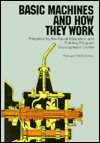 This revised edition of an extremely clear
Navy training manual thoroughly covers basic theory, ranging from the lever and inclined
plane up through internal combustion engines and power trains. Only the most elementary
mathematics is required to follow it.
This revised edition of an extremely clear
Navy training manual thoroughly covers basic theory, ranging from the lever and inclined
plane up through internal combustion engines and power trains. Only the most elementary
mathematics is required to follow it.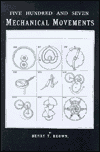 Five
Hundred and Seven Mechanical Movements was originally published in 1893. A
fascinating survey of basic mechanical movements from America's first 100 years of the
Industrial Revolution. For those of us who share an interest in mechanical things, this
book is addictive.
Five
Hundred and Seven Mechanical Movements was originally published in 1893. A
fascinating survey of basic mechanical movements from America's first 100 years of the
Industrial Revolution. For those of us who share an interest in mechanical things, this
book is addictive.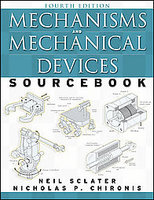 This is our favorite book on Mechanical design, and one of our over-all
favorite titles. Mechanisms & Mechanical Devices Sourcebook features an
amazing collection of "pre-invented" linkages, cams, gears, clutches, brakes,
and classical mechanisms. The 500 large-format pages with over 2500 illustrations make
each of the devices easy to understand and replicate.
This is our favorite book on Mechanical design, and one of our over-all
favorite titles. Mechanisms & Mechanical Devices Sourcebook features an
amazing collection of "pre-invented" linkages, cams, gears, clutches, brakes,
and classical mechanisms. The 500 large-format pages with over 2500 illustrations make
each of the devices easy to understand and replicate. The authors of Ingenious Mechanisms for
Designers and Inventors have made a thorough study of ingenious mechanisms that have
been patented in the last 200 years. They have culled the best and most original of these
ideas and presented them in this four volume set, with a total of 2100 pages and very
detailed drawings.
The authors of Ingenious Mechanisms for
Designers and Inventors have made a thorough study of ingenious mechanisms that have
been patented in the last 200 years. They have culled the best and most original of these
ideas and presented them in this four volume set, with a total of 2100 pages and very
detailed drawings.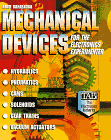 A how-to book for designing and fabricating mechanical
devices for motion and positioning in robotics. This book explains the fundamental
mechanical concepts necessary to design your own robot from scratch and details all the
theoretical information behind your inventions.
A how-to book for designing and fabricating mechanical
devices for motion and positioning in robotics. This book explains the fundamental
mechanical concepts necessary to design your own robot from scratch and details all the
theoretical information behind your inventions.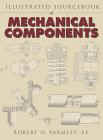 Packed with unique designs and unexpected
applications, the Illustrated Sourcebook of Mechanical Components is a compendium
of mechanical parts and their innovative uses and assemblies. Page after page, the text
leads you to new ideas and provides a practical and incredibly rich source of design
ideas.
Packed with unique designs and unexpected
applications, the Illustrated Sourcebook of Mechanical Components is a compendium
of mechanical parts and their innovative uses and assemblies. Page after page, the text
leads you to new ideas and provides a practical and incredibly rich source of design
ideas. Engineer to
Win : The Essential Guide to Racing Car Materials Technology or How to Build
Winners Which Don't Break is one of the books most cited by BattleBots
veterans. The author has many years of experience building racing cars, and
he has filled the book with tips and tricks that a robot builder can use.
Engineer to
Win : The Essential Guide to Racing Car Materials Technology or How to Build
Winners Which Don't Break is one of the books most cited by BattleBots
veterans. The author has many years of experience building racing cars, and
he has filled the book with tips and tricks that a robot builder can use.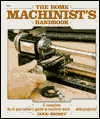 Here's
everything the do-it-yourselfer needs to set up, and operate a handy-man's machine shop.
Areas covered range from shop requirements and proper lighting to buying, using, and
storing tools. Recommended for beginning machinists. All the instructions and projects
shown are accomplished on Sherline benchtop tools, but the tricks and tips can be used in
any home-shop setup.
Here's
everything the do-it-yourselfer needs to set up, and operate a handy-man's machine shop.
Areas covered range from shop requirements and proper lighting to buying, using, and
storing tools. Recommended for beginning machinists. All the instructions and projects
shown are accomplished on Sherline benchtop tools, but the tricks and tips can be used in
any home-shop setup.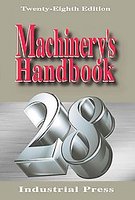 Celebrating
its 90th year, the newest edition of "The Bible" in its field brings
together volumes of knowledge, information and data gathered, revised and
improved upon from experts throughout the mechanical industries. The 27th
completely revised edition of the metalworking industry's definitive resource, Machinery's
Handbook provides a wealth of engineering and shop standards, illustrations,
formulas, tables, and graphs. Step by step, worked out examples illustrate the proper use
of a calculator to solve the formulas. Material properties, speeds and feeds for machining
of metals and plastics, and gear and thread geometry, are just some of the hundreds of
tables that fill this book.
Celebrating
its 90th year, the newest edition of "The Bible" in its field brings
together volumes of knowledge, information and data gathered, revised and
improved upon from experts throughout the mechanical industries. The 27th
completely revised edition of the metalworking industry's definitive resource, Machinery's
Handbook provides a wealth of engineering and shop standards, illustrations,
formulas, tables, and graphs. Step by step, worked out examples illustrate the proper use
of a calculator to solve the formulas. Material properties, speeds and feeds for machining
of metals and plastics, and gear and thread geometry, are just some of the hundreds of
tables that fill this book. Learn to weld like a pro with the best-selling Welder's
Handbook : A complete Guide to MIG, TIG, Arc, and Oxyacetylene Welding. This is a
completely revised and updated edition of the classic welding handbook.
Learn to weld like a pro with the best-selling Welder's
Handbook : A complete Guide to MIG, TIG, Arc, and Oxyacetylene Welding. This is a
completely revised and updated edition of the classic welding handbook.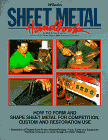 Robots with sweeping organic curves are the
most visually appealing BattleBots. Now you can learn the techniques for forming sheet
metal into complex curves or just simple boxes. In the Sheet Metal Handbook
master metal craftsman Ron Fournier gives step-by-step instructions for designing and
building with sheet metal.
Robots with sweeping organic curves are the
most visually appealing BattleBots. Now you can learn the techniques for forming sheet
metal into complex curves or just simple boxes. In the Sheet Metal Handbook
master metal craftsman Ron Fournier gives step-by-step instructions for designing and
building with sheet metal.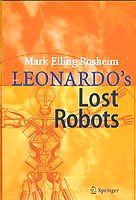 Leonardo's
Lost Robots reinterprets Leonardo da Vinci's mechanical design work,
revealing a new level of sophistication not recognized by art historians or
engineers. By identifying his major technological projects, the book
revisits Leonardo's legacy of notebooks, showing that apparently unconnected
fragments from dispersed manuscripts actually comprise cohesive designs for
functioning automata. Using the rough sketches scattered throughout almost
all of Leonardo's papers, Rosheim has reconstructed Leonardo's programmable
cart, which was the platform for other automata: a Robot Lion, a Robot
Knight, and a hydraulically powered automaton for striking a bell. Through a
readable, lively narrative, Mark Rosheim, in this beautifully illustrated
volume, recounts his adventures rediscovering and reconstructing da Vinci's
designs. In a foreword, the world-renowned Leonardo scholar Carlo Pedretti
details the significance of these reconstructions for our understanding of
Leonardo's oeuvre.
Leonardo's
Lost Robots reinterprets Leonardo da Vinci's mechanical design work,
revealing a new level of sophistication not recognized by art historians or
engineers. By identifying his major technological projects, the book
revisits Leonardo's legacy of notebooks, showing that apparently unconnected
fragments from dispersed manuscripts actually comprise cohesive designs for
functioning automata. Using the rough sketches scattered throughout almost
all of Leonardo's papers, Rosheim has reconstructed Leonardo's programmable
cart, which was the platform for other automata: a Robot Lion, a Robot
Knight, and a hydraulically powered automaton for striking a bell. Through a
readable, lively narrative, Mark Rosheim, in this beautifully illustrated
volume, recounts his adventures rediscovering and reconstructing da Vinci's
designs. In a foreword, the world-renowned Leonardo scholar Carlo Pedretti
details the significance of these reconstructions for our understanding of
Leonardo's oeuvre.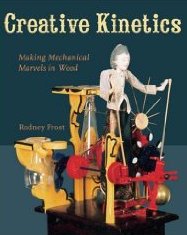 Artist,
inventor, and longtime author Rodney Frost is known for wacky, whimsical
woodworking books that encourage readers to experiment. With his newest,
most creative volume yet, he provides an introduction to the wild and
whimsical world of kinetic art- art that moves. Using plenty of informative
sidebars and dynamic illustrations, Frost teaches the basic techniques in
his own inimitable style, beginning with easy, fun projects like weather
vanes and mobiles powered by air currents alone. Then it's on to simple toys
you manipulate with strings, and art mechanized by levers, cranks, cams, and
cogs.
Artist,
inventor, and longtime author Rodney Frost is known for wacky, whimsical
woodworking books that encourage readers to experiment. With his newest,
most creative volume yet, he provides an introduction to the wild and
whimsical world of kinetic art- art that moves. Using plenty of informative
sidebars and dynamic illustrations, Frost teaches the basic techniques in
his own inimitable style, beginning with easy, fun projects like weather
vanes and mobiles powered by air currents alone. Then it's on to simple toys
you manipulate with strings, and art mechanized by levers, cranks, cams, and
cogs.